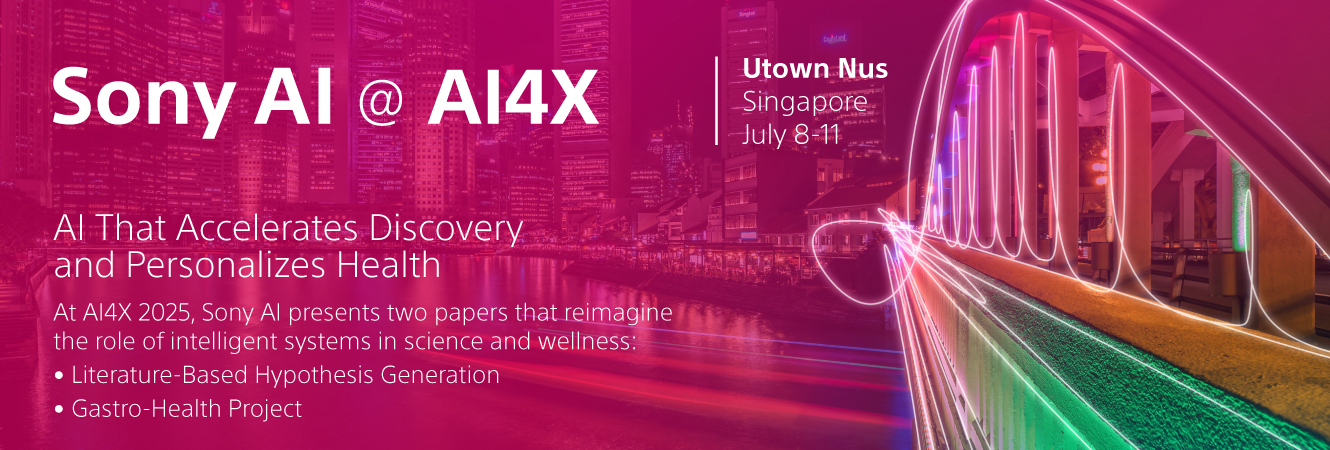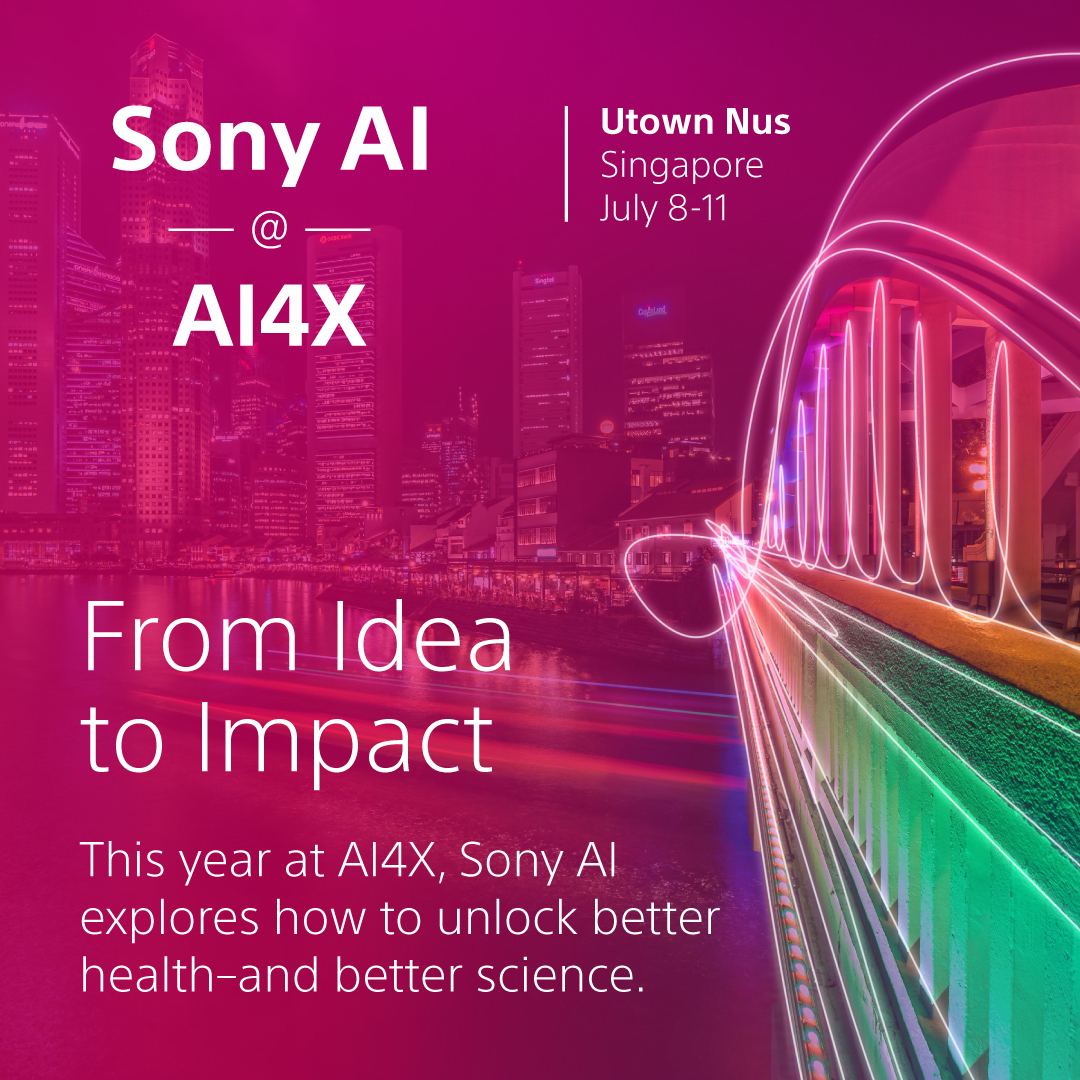Scientific Discovery: How Sony AI Is Building Tools to Empower Scientists and Personalize Health at AI4X 2025
Scientific Discovery
Events
July 7, 2025
At this year’s AI4X 2025, Sony AI is presenting two research projects that show how intelligent systems can augment knowledge and creativity in complex scientific research. These two papers continue the mission of our Scientific Discovery Flagship to support researchers, accelerate discoveries, and pioneer breakthroughs that benefit humanity. Together, these two papers offer a shared vision: AI that collaborates with humans, translates complexity into clarity, and transforms data into action.
In Literature-Based Hypothesis Generation, our researchers introduce a model that doesn’t just find patterns in the past: it predicts where there are gaps in the research, pointing to where science might go next and helping researchers stay ahead of the curve with testable hypotheses.
Why? Imagine trying to find one new idea in a sea of 50 million. That’s today’s reality for scientists, as global peer-reviewed scientific literature output continues to surge across disciplines. Staying afloat isn’t just hard; it’s borderline unfeasible.
But what if AI could serve as a compass, scanning this ever-expanding ocean and surfacing meaningful, unexplored connections?
That’s exactly what our researchers set out to do. In their newly accepted paper at AI4X 2025 in Singapore, the team introduces a novel system that goes beyond simply analyzing published studies. It predicts where science has missed golden opportunities—while helping researchers understand why such a hypothesis is worth exploring.
Meanwhile, on the frontlines of personal and clinical health, the Gastro-Health Project tackles another modern challenge: how to personalize nutrition and medical advice in a world full of conflicting data and one-size-fits-all recommendations. This integrated AI platform transforms everyday food choices into science-backed, predictive health strategies tailored to each person’s biology, medication, and goals.
What unites both the Gastro-Health Project and Literature-Based Hypothesis Generation isn’t just technical innovation: It’s intention. We are building systems that listen, learn, and explain. Systems that adapt to individuals, respect expertise, and close the gap between discovery and decision-making. Read on to learn more.
Navigating the Scientific Ocean: How Sony AI is Helping Researchers Chart New Courses with Literature-Based Hypothesis Generation
At its heart, this research asks: How can we predict meaningful relationships in science that are as yet under-explored? The answer: by treating science itself like a living, growing graph.
In this graph, concepts are nodes and relationships between them—like “causes” or “is used to treat”—are edges. And because knowledge evolves over time, the researchers frame the problem as a temporal graph that changes as new papers are published.
“Given a sequence of timestamped graphs G = {G0, G1, ..., GT}, each graph at time t is represented as Gt = (Vt, Et, Ft)… The objective is to predict which previously unconnected nodes in GT should be linked.”
To do this, the team builds on last year’s THiGER model, which uses hierarchical transformer encoders to embed relationships over time. THiGER-A, introduced in this paper, takes it a step further. Think of it as a student that not only learns from the past, but also prioritizes what lessons to focus on next. That’s because THiGER-A incorporates active curriculum learning (see Fig. 1 below), training itself on only the most informative data points.
“THiGER-A… incorporates an active curriculum learning strategy that trains the model on high-utility samples whilst also mitigating label bias arising from unobserved connections,” the researchers explain.
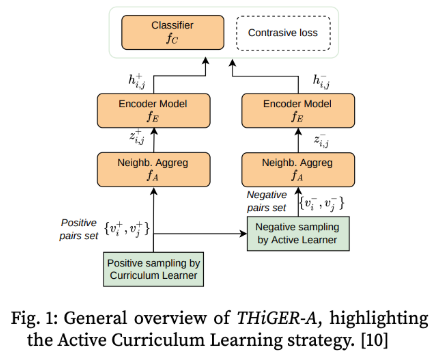
This combination (temporal learning + active sample selection) makes THiGER-A both forward-looking and strategically selective. Like a scientist flipping through journals not page-by-page, but instead skipping to the most likely breakthroughs.
Why It Matters
Most AI hypothesis-generation systems today are black boxes. They offer conclusions, but no breadcrumbs to follow. That’s not helpful for real researchers who need to understand how a suggestion was made before they can trust it. As the paper argues: “It is not sufficient to output only an isolated novel hypothesis.”
Our answer is to pair prediction with explanation. The system not only guesses which connections might form next, it explains why the model believes those links matter, using symbolic and generative techniques that make the “why” as important as the “what.”
This emphasis on transparency isn’t just a nice-to-have: It’s essential to making AI a collaborator in the scientific process.
Challenges, Solutions & Milestones
Sony AI’s literature-based hypothesis generation pipeline doesn’t just map what’s known—it ventures into what could be next. The team is turning AI into an effective research partner.
Better said: It’s not a shortcut to discovery. It’s a scouting party… exploring unknown terrain, leaving signposts, and returning with ideas that real scientists can validate, refine, or even challenge.
As the authors conclude: “What we presented are only pieces of a larger puzzle… a process that crucially needs to involve scientists throughout for input and feedback.” By building a system that thinks with researchers, weI are pushing the field toward something deeper than prediction: collaboration.
Let’s look at just a couple of the challenges we faced, and how we overcame them.
Challenge 1:
Capturing Science in Motion
Scientific knowledge doesn’t stand still: it evolves. The THiGER-A architecture answers that by treating literature as a time-lapse graph: each time slice represents a snapshot of scientific understanding, and the system learns how relationships emerge, fade, or evolve over time.
The team uses a hierarchical encoder that absorbs these shifts across multiple layers. It’s kind of like reading older and newer papers together to understand a trend’s trajectory. Results show the model is not only accurate but efficient: “Empirical validation of our approach showed it to be effective in established temporal-graph benchmarks and on real-world datasets from the food-health domain,” the researchers note of the outcome. This proves the model isn’t just theoretical.
Challenge 2:
Making Predictions Explainable
What good is a prediction if no one can interpret it? To solve this, the team developed KGExplainer, a symbolic interpreter that translates dense graph embeddings into understandable logical rules. For instance, KGExplainer doesn’t just say “A is linked to B,” it tells you the intermediate steps that connect them, like “A relates to C, and C often co-occurs with B.” These clauses give researchers a way to reason through the hypothesis, rather than blindly accept it. “KGExplainer translates… symbolic regularities into symbolic rules, or triples comprehensible to humans,” the researchers denote. It's a five-step process. From identifying local graph neighbors to surfacing the most descriptive rules, it allows real-time, on-the-fly explanation without retraining the model.
How the Gastro-Health Project Could Reshape Personalized Wellness
Personalized nutrition has long felt like the holy grail of preventive health. The problem is that conventional wisdom still clings to “one-size-fits-all” food pyramids, while individual factors like medications, allergies, and even mental health often go ignored.
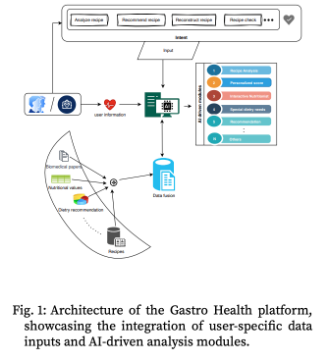
Meet the Gastro-Health Project, our ambitious initiative to rethink how we feed ourselves; not just for energy, but for precision health. Presented at AI4X 2025, this paper outlines a comprehensive AI platform that acts as both personal nutritionist and clinical support tool. It blends real-time biomedical literature, user biometrics, drug–food interaction data, mood insights, and predictive modeling into one scalable, interactive system.
It’s not just about tracking calories. It’s about transforming your kitchen into an extension of your care team.
Why It Matters
Modern nutrition apps often focus on narrow metrics. Calories in, calories out. But health is not a math problem; it’s a system. Gastro-Health addresses what other platforms miss: the interplay between food, medication, emotions, and time.
In Table 1 of the paper (see below), the authors compare Gastro-Health with other systems like Brightseed and HealthifyMe. The differences are stark: “Our approach… combines personalized nutritional scoring, food–drug interaction analysis, and predictive health forecasting into one cohesive platform.”
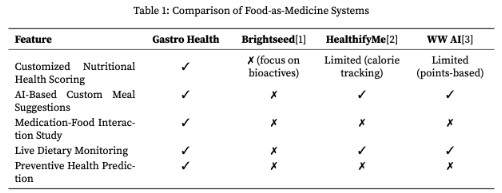
Unlike traditional tools, Gastro-Health warns users if, for example, their statin prescription might interact with their morning grapefruit juice. It can adjust recipes to accommodate allergens without compromising nutrient balance. It even helps manage mood through nutritional psychology by suggesting meals that promote calm or energy depending on your goals. And it’s grounded in continuous learning: “Our system continuously ingests new scientific literature through advanced NLP techniques.”This is not just food tracking: it’s food forecasting.
Results: More Than a Prototype
The paper outlines a working system that’s already delivering novel capabilities not found in leading platforms: “Our previous works… provided a foundation for understanding food-health relationships. Building upon these, we propose a comprehensive system that proactively identifies potential health-based food interactions.,” the researchers explain. And as a standout feature, they note, “Our system continuously ingests new scientific literature through advanced NLP techniques. This ensures that our recommendations remain current with evolving dietary guidelines and biomedical discoveries.”
Compared with tools like HealthifyMe and WWAI, only Gastro-Health scores all five of the following features:
- - Customized Nutritional Health Scoring
- - AI-Based Custom Meal Suggestions
- - Medication-Food Interaction Study
- - Live Dietary Monitoring
- - Preventive Health Prediction
- That breadth is what sets it apart.
Final Thoughts
Whether it’s supporting a scientist exploring new theories or helping someone choose a lunch that won’t interfere with their medication, the mission is the same: to design AI that amplifies human agency, not replaces it.
And while the models showcased at AI4X 2025 represent major milestones, they’re also building blocks toward a longer-term commitment to transparent, useful AI. The path ahead is complex, but with the right tools, it becomes more navigable.
Read the research papers here:
Latest Blog
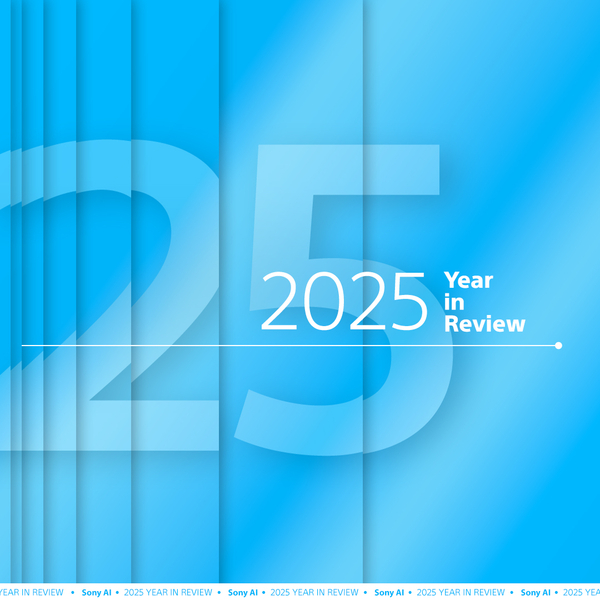
December 22, 2025 | Life at Sony AI, Sony AI
Sony AI 2025, Year in Review
As the year comes to close, we’re reflecting not only on key research milestones, but on the scale of work achieved across our global teams. In 2025, we published 87 papers, contri…
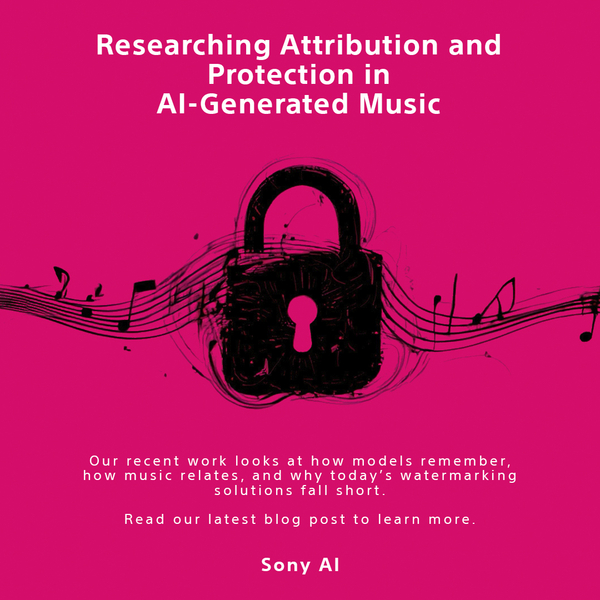
December 15, 2025 | Sony AI
Protecting Creator’s Rights in the Age of AI
The rise of artificial intelligence technologies that can generate songs and mimic musical styles and artists has led to a surge in AI music content with unclear origins, prompting…
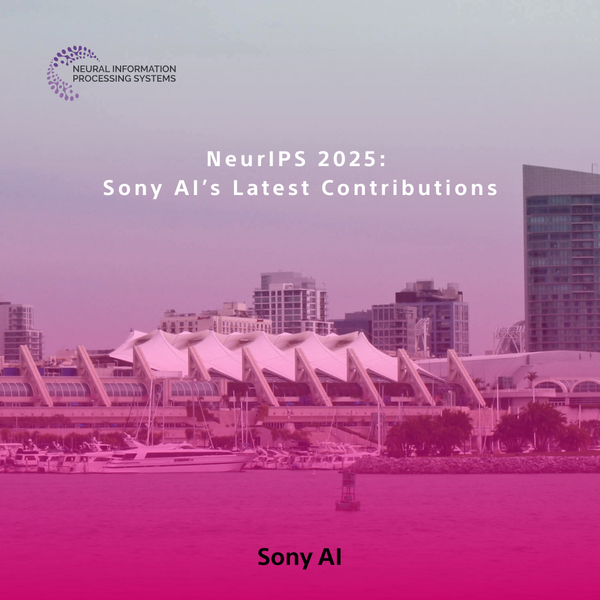
December 1, 2025 | Events
NeurIPS 2025: Sony AI’s Latest Contributions
NeurIPS 2025 brings together work across Sony AI that targets real problems in real settings. The research in this roundup focuses on models that adapt under constraints, handle fr…

